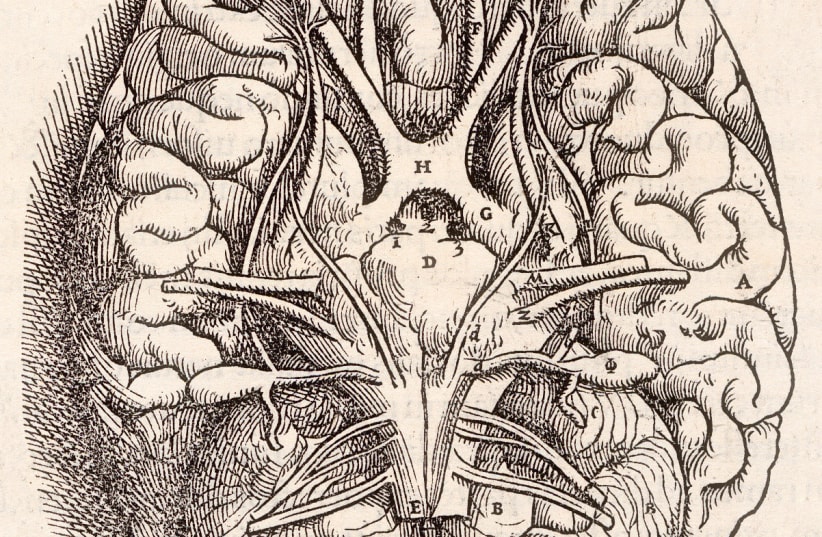Scientists from the University of Copenhagen and the University of Rochester have discovered a new membrane that surrounds and protects the brain, according to a new peer-reviewed study published in the journal Science on Thursday.
The traditional view is that the brain is surrounded by three layers: the dura, arachnoid and pia mater. However, a team of researchers led by Kjeld Møllgård and Maiken Nedergaard found a fourth membrane they call SLYM (an abbreviation of Subarachnoidal LYmphatic-like Membrane).
The discovery was made while the team was studying the glymphatic system, which "washes out" harmful waste products from the brain, largely while we sleep, explained Nedergaard in an article on the website of the Lundbeck Foundation, which helped fund the research.
How did researchers find the SLYM?
In order to study the glymphatic system, scientists need to examine the anatomy of the brain-lymphatic vessels, which is easier said than done.
Check this out: We monitored how a small molecule (Fluorofurimazine) enters the cerebrospinal fluid (CSF) compartment containing the luciferase enzyme (GeNL) at the interface of the venous endothelium and SLYM by bioluminescence imaging. https://t.co/KIIG9YO4os pic.twitter.com/XjKP69JHUw
— drfelix (@mrfelix) January 6, 2023

"For example, previous experiments on mice showed mammals have lymphatic vessels that connect the brain straight to the skull. So, when you remove a mouse brain from the skull to study it, you destroy those vessels," explained Nedergaard in the article. "That’s why I asked Professor Møllgård, an authority on neuroanatomy – especially brain membranes and barriers – to help me analyze mouse brains by removing whole heads from genetically engineered mice and slicing them into very thin sections – complete with skin, hair, teeth, bones and brains – the lot!"
"The discovery is remarkable, not just because parts of the textbooks on neuroanatomy now need to be fundamentally revised – which isn’t exactly an everyday occurrence – but also because studying the previously unknown membrane will help us develop a new understanding of things like Alzheimer’s and other neurological disorders."
Maiken Nedergaard, professor at the University of Rochester Medical Center
"The discovery is remarkable, not just because parts of the textbooks on neuroanatomy now need to be fundamentally revised – which isn’t exactly an everyday occurrence – but also because studying the previously unknown membrane will help us develop a new understanding of things like Alzheimer’s and other neurological disorders," Nedergaard said.
What is the SLYM?
The SLYM is a type of membrane called mesothelium, which is also found around other organs, including the lungs and heart, which usually surrounds and protects organs and host immune cells.
The newly discovered layer is located between the arachnoid layer and the pia mater, according to a press release by the University of Rochester Medical Center.
The SLYM is incredible small - consisting of only one or a few cells in thickness - and yet it still manages to hold a tight barrier, allowing only very small molecules through.
The membrane seems to separate clean cerebrospinal fluid (CSF) from dirty fluid, which may indicate its role in the glymphatic system.
The layer is also seemingly important for protecting the brain, preventing outside immune cells from entering and hosting its own immune cells to surveil at the surface of the brain for infections.
"These two properties will now be explored in greater depth to generate new insights into Alzheimer’s and other neurodegenerative disorders," Nedergaard said. "It is a logical next step to investigate this because good CSF circulation and efficient disposal of degraded proteins and other waste products are vital for keeping the brain healthy."
The researchers noted that larger and more diverse concentrations of immune cells congregate of the SLYM during inflammation and aging. When the membrane was damaged by traumatic brain injury, the flow of CSF impaired the glymphatic system and allowed outside immune cells to enter the brain.
The researchers believe that brain diseases including multiple sclerosis, central nervous system infections and Alzheimer’s may be triggered or worsened by abnormalities in SLYM function. Treatments being developed for these diseases may need to take the newly discovered membrane into account.
"With Alzheimer’s, for example, degraded proteins build up which otherwise ought to have been flushed out of the brain. So, finding out more about how SLYM works may enhance our understanding of neurodegenerative disorders and improve our chances of developing new forms of treatment for them," Nedergaard explained to the Lundbeck Foundation.
